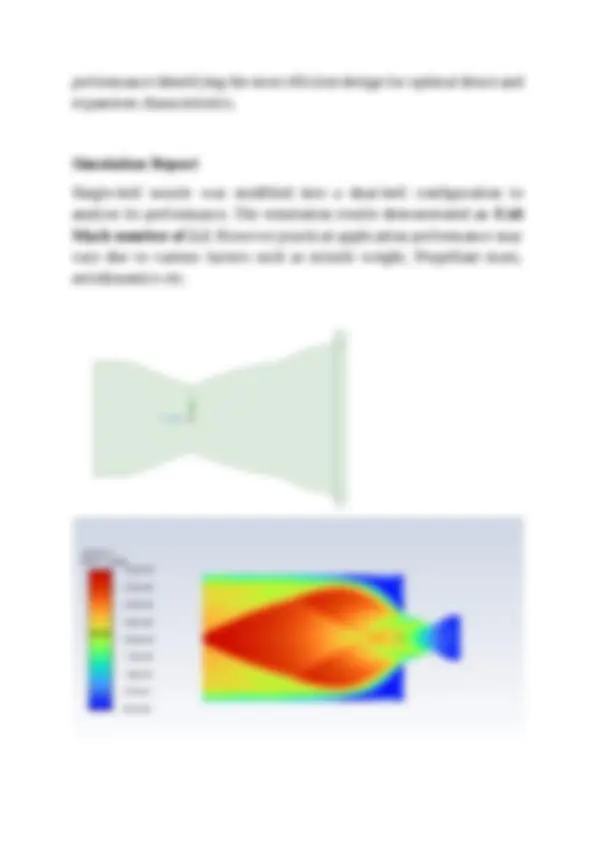



Study with the several resources on Docsity

Earn points by helping other students or get them with a premium plan


Prepare for your exams
Study with the several resources on Docsity

Earn points to download
Earn points by helping other students or get them with a premium plan
Community
Ask the community for help and clear up your study doubts
Discover the best universities in your country according to Docsity users
Free resources
Download our free guides on studying techniques, anxiety management strategies, and thesis advice from Docsity tutors
abouthe the literature reviews and all just read it
Typology: Schemes and Mind Maps
1 / 2

This page cannot be seen from the preview
Don't miss anything!


Objective This study aims to analyse the aerodynamic performance of different nozzle configurations for missile applications using Computational Fluid Dynamics (CFD). Various nozzle geometries, including convergent-divergent (C-D), bell-shaped, and conical designs, are simulated under a given operating condition to evaluate their impact on thrust, specific impulse, and shockwave behaviour. The objective is to identify an optimal nozzle configuration or to compare the difference in performance parameters. Problem Statement The efficiency and performance of a missile propulsion system is highly dependent on the operating parameters such as missile weight (Propellant & Structure), Nozzle configuration etc. Comparative performance analysis of various nozzle configurations to identify the design which produces the maximum thrust with higher specific impulse. Novelty Unlike conventional studies that focus on a single nozzle design, this research systematically compares multiple nozzle geometries, including C-D, bell-shaped & conical designs, under specific operating condition using CFD. The novelty of this work lies in evaluating nozzle
performance identifying the most efficient design for optimal thrust and expansion characteristics. Simulation Report Single-bell nozzle was modified into a dual-bell configuration to analyse its performance. The simulation results demonstrated an Exit Mach number of 2.2. However practical application performance may vary due to various factors such as missile weight, Propellant mass, aerodynamics etc.